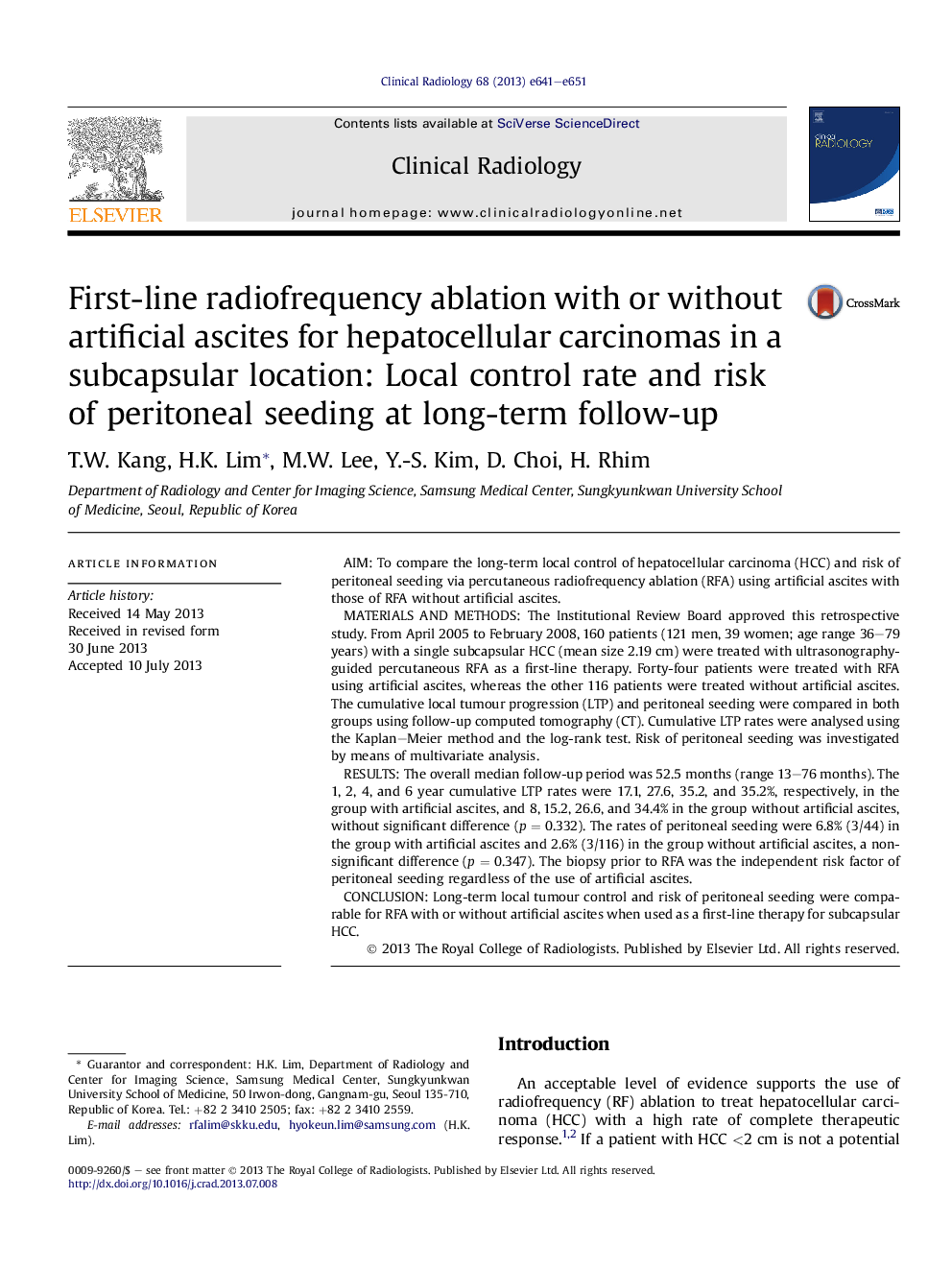| Article ID | Journal | Published Year | Pages | File Type |
|---|---|---|---|---|
| 3982373 | Clinical Radiology | 2013 | 11 Pages |
AimTo compare the long-term local control of hepatocellular carcinoma (HCC) and risk of peritoneal seeding via percutaneous radiofrequency ablation (RFA) using artificial ascites with those of RFA without artificial ascites.Materials and methodsThe Institutional Review Board approved this retrospective study. From April 2005 to February 2008, 160 patients (121 men, 39 women; age range 36–79 years) with a single subcapsular HCC (mean size 2.19 cm) were treated with ultrasonography-guided percutaneous RFA as a first-line therapy. Forty-four patients were treated with RFA using artificial ascites, whereas the other 116 patients were treated without artificial ascites. The cumulative local tumour progression (LTP) and peritoneal seeding were compared in both groups using follow-up computed tomography (CT). Cumulative LTP rates were analysed using the Kaplan–Meier method and the log-rank test. Risk of peritoneal seeding was investigated by means of multivariate analysis.ResultsThe overall median follow-up period was 52.5 months (range 13–76 months). The 1, 2, 4, and 6 year cumulative LTP rates were 17.1, 27.6, 35.2, and 35.2%, respectively, in the group with artificial ascites, and 8, 15.2, 26.6, and 34.4% in the group without artificial ascites, without significant difference (p = 0.332). The rates of peritoneal seeding were 6.8% (3/44) in the group with artificial ascites and 2.6% (3/116) in the group without artificial ascites, a non-significant difference (p = 0.347). The biopsy prior to RFA was the independent risk factor of peritoneal seeding regardless of the use of artificial ascites.ConclusionLong-term local tumour control and risk of peritoneal seeding were comparable for RFA with or without artificial ascites when used as a first-line therapy for subcapsular HCC.
